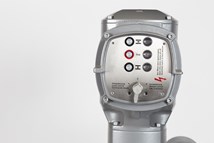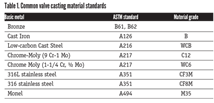New Standard Proposed for Corrosion Resistance
Proposed Nanostructured Zinc-Nickel Coating Standard Will Support Corrosion Protection.
#materials #standards
ASTM International’s metallic and inorganic coatings committee (B08) is developing a proposed standard (WK29468), that will establish performance requirements for electrodeposited, nanostructured zinc-nickel coatings.
The scope of application for the coating will be to provide enhanced corrosion resistance in marine, industrial, and high humidity environments to oil & gas, automotive, and aerospace components such as fasteners, brackets, and housings, as well as other industrial applications.
“The proposed standard specifically targets nanostructured grain microstructures that are achieved through advanced modulated electrodeposition technologies, creating a distinct nano-laminar structure,” said ASTM member Herman Amaya from Modumetal Inc. “These features collectively result in enhanced corrosion resistance, as validated by field tests and ASTM B117 Salt fog results and will form the guideline for developing internal specifications that companies will use to establish requirements as specified in purchase orders.”
This effort directly relates to the United Nations Sustainable Development Goal #3 by reducing reliance on hazardous substances by specifying Cr(III) passivate instead of Cr(VI) hexavalent chrome, and #12; by presenting itself as a substitute for cadmium coatings known for their hazardous risks to health and the environment.
Amaya also notes that the proposed standard is the first within the committee that introduces the application of adjusted electrodeposition parameters known as nanolaminar, pulse and reverse pulse plating that have been under development for the past 15 years and that are now being commercially applied.
All interested parties are invited to join in the development of the proposed standard. Experts in materials science, electrochemistry and industrial coating applications are especially encouraged to participate.
RELATED CONTENT
-
Dealing with Sand Erosion in Control and Choke Valves
Sand erosion in control and choke valves is a significant consideration offshore.
-
PFAS Chemicals and PTFE: Should the Valve Industry Be Concerned?
Legislation moving through Congress could affect the future use of thousands of PFAS chemicals (per- and polyfluoroalkyl). The house passed H.R. 2467 in July of 2021 and, though the bill is general in nature, it assigns the responsibility to the Environmental Protection Agency (EPA) for determining which PFAS chemicals will be controlled or banned altogether.
-
Material Q&A: Elastomer and Plastic Materials
Question: What is the difference between plastic and elastomer?








 Unloading large gate valve.jpg;maxWidth=214)

